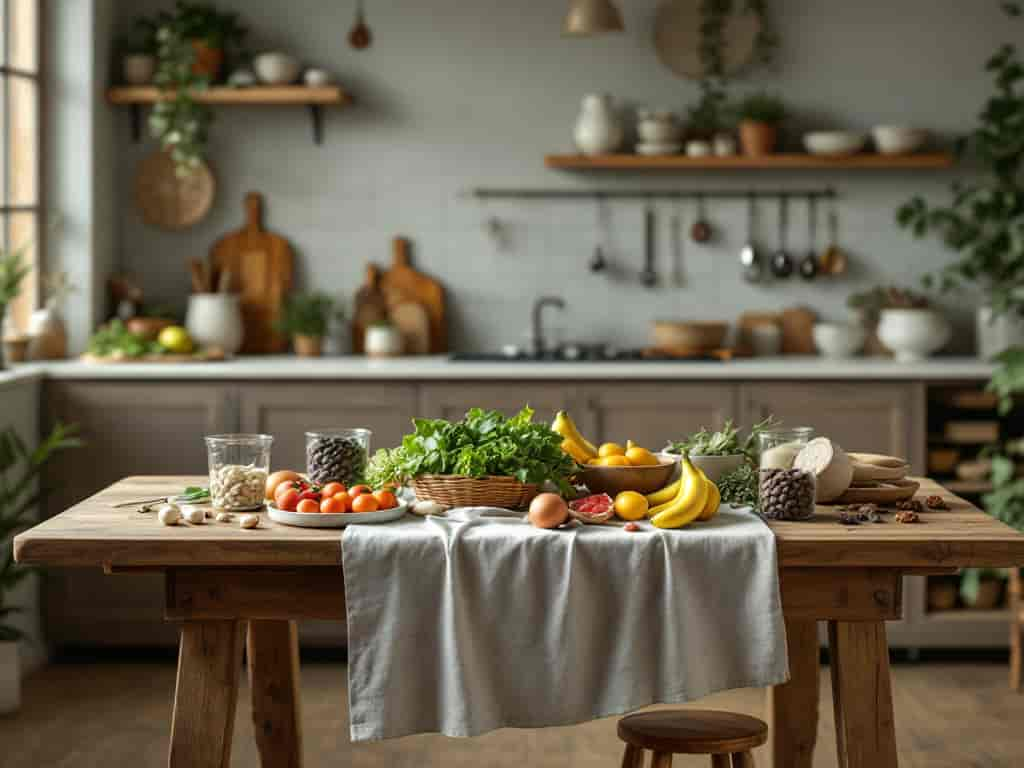ADHD in Classrooms: Best Practices for Teachers
Ellie Moore

Photo: ADHD in Classrooms: Best Practices for Teachers
ADHD in Classrooms: Best Practices for Teachers
Teaching students with ADHD (Attention-Deficit/Hyperactivity Disorder) presents unique challenges, but with the right strategies, teachers can create an environment that allows these students to thrive. Whether you're a seasoned educator or new to the classroom, understanding ADHD and implementing best practices can make a profound difference in how your students engage with their learning.
In this article, we’ll explore practical tips and evidence-backed strategies that can help teachers support students with ADHD. We’ll cover everything from classroom management to tailored teaching approaches, ensuring you can provide the best possible learning experience for all students.
Understanding ADHD in the Classroom
ADHD is one of the most common neurodevelopmental disorders in children. It’s characterized by symptoms like inattention, hyperactivity, and impulsivity, which can significantly impact a student's ability to focus, follow instructions, and complete tasks. The symptoms of ADHD vary from student to student, but the core challenges typically include:
- Inattention: Difficulty staying on task, forgetfulness, and trouble organizing activities.
- Hyperactivity: Restlessness, excessive talking, or difficulty staying still.
- Impulsivity: Acting without thinking, interrupting others, or difficulty waiting for one's turn.
Understanding these behaviors is crucial for teachers. ADHD is not a result of laziness or poor behavior it’s a neurological condition that affects how a student processes information and manages impulses. Knowing this helps create empathy, and sets the foundation for effective strategies.
Creating an ADHD-Friendly Classroom Environment
A well-organized and structured environment is key to helping students with ADHD stay focused and engaged. Here are some classroom practices that promote success:
1. Establish Clear Routines and Expectations
Students with ADHD often struggle with organization and time management. Clear routines help them know what to expect and reduce anxiety.
- Set consistent schedules: A predictable day helps students with ADHD focus on what’s happening next, rather than worrying about what’s coming up.
- Use visual schedules: Posting a daily or weekly schedule on the wall can help students anticipate transitions and stay on track.
- Provide clear instructions: Be explicit about what you expect from students and break down tasks into smaller, manageable steps.
2. Minimize Distractions
Distractions in the classroom can overwhelm students with ADHD, making it hard for them to focus. Here’s how you can reduce distractions:
- Seating arrangements: Place students with ADHD near the front of the room, away from windows, doors, or other distractions.
- Use noise-canceling tools: If possible, provide noise-canceling headphones or allow students to work in a quiet space.
- Limit visual clutter: Keep bulletin boards and classroom displays organized to reduce sensory overload.
3. Incorporate Movement Breaks
Students with ADHD often have a surplus of energy. Incorporating short movement breaks into the day can help them release this energy, improving focus during lessons.
- Brain breaks: Set aside 5-10 minutes throughout the day for physical activity, like stretching or a quick walk around the room.
- Movement-friendly activities: Allow students to stand or use fidget tools while working to help them maintain attention.
Tailoring Teaching Strategies for ADHD Students
While structure and routine are essential, teachers must also adjust their teaching techniques to better support ADHD students. Here are some strategies that cater to different learning needs:
4. Use Active Learning Techniques
Active learning methods such as group work, hands-on projects, and interactive discussions engage students more deeply than passive listening to lectures. These techniques are especially beneficial for students with ADHD, who may struggle with traditional learning methods.
- Project-based learning: Give students the opportunity to explore topics in-depth through projects that require planning, research, and collaboration.
- Gamification: Incorporating game-like elements (like point systems or competitions) can help ADHD students stay engaged and motivated.
5. Provide Clear and Concise Instructions
Students with ADHD often have trouble processing and retaining long or complex instructions. To help them succeed:
- Break tasks into smaller steps: Give one instruction at a time and allow students to complete each step before moving on.
- Use visual aids: Visuals such as diagrams, charts, and step-by-step guides can make instructions easier to follow.
- Repeat instructions: Ensure that instructions are repeated and clarified as needed.
6. Offer Positive Reinforcement
Students with ADHD thrive on encouragement and positive feedback. Frequent praise for small achievements can build their confidence and motivation.
- Immediate feedback: Offer praise as soon as a task is completed, even if it’s small, to reinforce positive behavior.
- Use reward systems: Implement a token or point system to reward attention, effort, and good behavior.
- Be specific in your praise: Instead of simply saying “Good job,” specify what the student did well, such as “I really like how you stayed on task during the reading activity.”
Supporting Emotional and Social Development
Students with ADHD often face challenges not only academically but socially and emotionally as well. They may struggle with impulse control, making friendships difficult, or feel frustrated by their academic struggles. Here’s how you can support their social and emotional growth:
7. Promote Social Skills Development
Students with ADHD may struggle with social interactions. Help them develop positive social skills by:
- Modeling appropriate behavior: Demonstrate how to interact politely, take turns, and resolve conflicts.
- Encouraging teamwork: Group projects or partner work can provide practice in collaboration and communication.
- Using role-playing: Role-playing social situations helps students practice and develop interpersonal skills.
8. Foster Emotional Regulation
Help students with ADHD learn how to manage their emotions, especially when they become frustrated or overstimulated.
- Teach self-regulation strategies: Techniques like deep breathing, counting to ten, or using a stress ball can help students calm down during difficult moments.
- Create a “cool down” space: Designate a quiet corner in the classroom where students can go if they need a break from social or academic pressure.
Collaborating with Parents and Specialists
A partnership with parents and specialists can ensure that a student with ADHD receives comprehensive support both in and outside the classroom. Here's how you can collaborate:
9. Work Closely with Parents
Communication with parents helps create consistency between home and school.
- Regular updates: Keep parents informed about their child’s progress, challenges, and successes.
- Share strategies: If a technique is working well in the classroom, share it with parents so they can reinforce it at home.
- Be open to feedback: Parents often have valuable insights into what works best for their child.
10. Utilize Support Services
Work with special education teachers, counselors, and other professionals to ensure the student receives the best possible support.
- Individualized Education Plans (IEPs): These plans outline specific accommodations and modifications to help the student succeed.
- Behavioral specialists: Consulting with a behavioral therapist can help identify strategies to address challenging behaviors and improve focus.
Conclusion: Empowering ADHD Students to Succeed
Creating an ADHD-friendly classroom is about more than just implementing strategies it’s about fostering an environment of understanding, support, and inclusivity. By structuring your classroom thoughtfully, tailoring your teaching techniques, and working closely with students, parents, and specialists, you can help your ADHD students unlock their full potential.
Teaching students with ADHD can be challenging, but it’s also incredibly rewarding. With the right approaches, teachers can empower these students to excel academically, socially, and emotionally.
Call to Action:
If you found these strategies helpful, share this article with other educators who may benefit from these insights! Leave a comment below if you have any additional tips or experiences to share about teaching students with ADHD.
Frequently Asked Questions (FAQs)
Q: What are some signs that a student might have ADHD? A: Common signs include difficulty focusing on tasks, forgetfulness, difficulty following instructions, impulsive behavior, and excessive talking or fidgeting.
Q: Can ADHD be managed in the classroom? A: Yes! With the right strategies, such as structured routines, clear instructions, and positive reinforcement, students with ADHD can succeed in the classroom.
Q: How can teachers collaborate with parents to support students with ADHD? A: Teachers can maintain open communication, share successful strategies, and ensure consistency between home and school environments.
Finance & Investment
View All
June 27, 2025
Auto Repair Financing Help When You Need ItWhat is expert SEO content? Go beyond keywords to deliver genuine value, build trust, and rank higher. Learn to satisfy users and search engines for organic gro...
Ellie Moore

March 25, 2025
Inside the Work of the Senate Finance CommitteeGo beyond basic content. Discover how expert SEO content drives rankings, builds authority, and attracts sustainable organic traffic for lasting online success.
Ellie Moore

November 13, 2024
Decoding Market Sentiment: How Investor Psychology Moves the MarketsUncover the secrets of market sentiment. Explore how investor psychology drives markets. Make smart trading decisions. Decode the market now!
Ellie Moore

February 9, 2025
Top Tools for Industry Benchmarking in 2024Explore the best tools for industry benchmarking in 2024. Analyze performance metrics and elevate your business strategy.
Ellie Moore

November 25, 2025
Driveway Finance Car OwnershipUnlock organic growth! Learn why expert SEO content, built on E-E-A-T, is crucial for higher rankings, trust, and attracting your ideal audience.
Ellie Moore

November 17, 2024
How to Set Up Your Emergency FundBuild a safety net with our guide to setting up an emergency fund! Learn how to calculate your savings goal, choose the right account, and stay motivated. Start preparing for the unexpected!
Ellie Moore
Insurance
View AllUnlock peace of mind with Top-Rated Farm Bureau Insurance. Get comprehensive protection and financial security for your assets, tailored for policyholders and r...
Ellie Moore
Explore aviation insurance options, from aircraft liability to passenger protection. Secure the skies for your operations!
Ellie Moore
Safeguard your trips with Ultimate Allianz Travel Insurance. Get comprehensive coverage for cancellations, medical emergencies & more. Travel with confidence!
Ellie Moore
Strategic guide to Liberty Mutual insurance. Optimize coverage, mitigate risk, and boost financial efficiency for policyholders & risk managers.
Ellie Moore
Save on health insurance without losing essential coverage. Discover practical tips to reduce premiums and manage costs wisely.
Ellie Moore
Secure optimal insurance protection without overspending. Learn how policyholders and risk managers can get cheap, high-value coverage today.
Ellie Moore
Education
View AllUnderstand the causes, effects, and potential solutions to the student loan debt crisis. Learn what can be done to ease this financial burden.
Read MoreSocial skills training is key for kids with autism. Learn practical strategies to improve social interaction and communication in children with ASD.
Read MoreArts education is key to fostering creativity. Learn why it’s important in schools and how it helps students develop essential life skills.
Read MoreThe digital divide limits education access. Explore strategies and initiatives to bridge this gap and ensure global learning equality.
Read MoreDiscover how assistive technology empowers special needs learners. Learn about tools that foster inclusivity and enhance educational outcomes.
Read MoreMicro-credentials are on the rise! Discover how they provide fast, focused skills for today’s learners and reshape education.
Read MorePopular Post 🔥
View All
1
2
3
4
5
6
7
8
9
10
Health





Automotive
View All
August 17, 2025
Automotive Record Player A Retro Ride Upgrade
Upgrade your ride with a retro automotive record player! Experience the warm, rich sound of in-car vinyl for a truly unique analog journey.

August 6, 2025
Cornerstone Automotive Tips For Reliable Repairs
Master reliable car repairs! Learn proactive maintenance, choose trusted pros, save money, and ensure your vehicle lasts longer.

September 5, 2025
Best Deals On Automotive Tint Near Me
Get the best deals on automotive tint near you! Enhance privacy, reduce heat & UV, and boost style with our comprehensive guide.

September 3, 2025
Automotive Oil Film Cleaning Brush Explained
Banish frustrating oil film! Learn why standard cleaning fails & how the automotive oil film cleaning brush restores crystal-clear windshields for safer driving...

September 7, 2025
Blue Ridge Automotive Trusted Car Repairs
Worried about car repairs? Learn why trust matters. Blue Ridge Automotive offers reliable service, ensuring your safety, savings, and peace of mind.

September 10, 2025
Hometown Automotive Service With Heart
Discover the power of local auto service with heart. It's about trust, community, and personalized care that goes beyond just repairs.


















